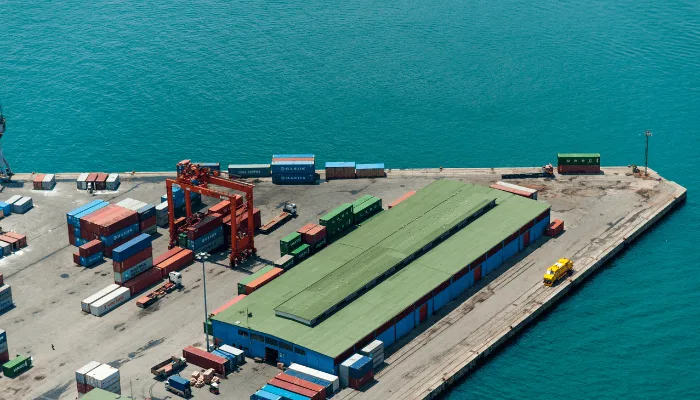
Sustainability in Global Petrochemical Supply Chains — A Practical Guide (2025)
Introduction
Sustainability is no longer a marketing buzzword — it is a business imperative for petrochemical producers, traders, and buyers. Products such as PE100B resin, SN150 base oil, and monoethylene glycol (MEG) are central to modern industry, but their production and distribution carry environmental impacts across energy use, greenhouse gas emissions, waste, and end-of-life disposal. Building a sustainable petrochemical supply chain means rethinking feedstocks, energy sources, logistics, packaging, circularity, and supplier relationships. For buyers and exporters alike, the shift toward sustainability is both a risk (regulatory, reputational, market access) and an opportunity (cost savings, new markets, buyer preference).
This guide explains why sustainability matters in petrochemicals, the levers companies can pull, how to measure progress (including carbon accounting), and practical steps for exporters and buyers to work with green petrochemical suppliers.
Why Sustainability Matters in Petrochemical Supply Chains
Regulation & Market Access — Regions (EU, UK, parts of Asia) increasingly link market access and tariffs to environmental performance. Buyers demand lower embodied carbon and compliance with chemical safety rules.
Cost & Resilience — Energy-efficient plants and circular feedstocks reduce exposure to volatile oil/gas prices and supply shocks.
Buyer Preference & Brand — Brands (packaging, automotive, textiles) are demanding low-carbon inputs, creating premiums for suppliers who can demonstrate sustainable credentials.
Risk Management — Environmental incidents, waste mismanagement or non-compliance can lead to fines, shipment holds, and long-term reputational damage.
In short: a credible sustainable petrochemical supply chain is now part of commercial due diligence.
Key Levers to Reduce the Carbon Footprint and Environmental Impact
Below are the major levers that materially reduce the carbon footprint of petrochemicals and improve sustainability.
1. Feedstock Innovation
Recycled content: Using mechanically or chemically recycled polymers reduces lifecycle emissions compared to virgin fossil feedstock.
Bio-based feedstocks: Where appropriate, using bio-MEG or bio-naphtha derived from sustainable biomass can lower cradle-to-gate emissions.
Alternative feedstock sourcing: Co-processing of plastic waste in refining or using waste-derived syngas.
Buyers requiring lower embodied carbon should ask suppliers for scope-3 upstream feedstock breakdowns and the share of recycled or bio feedstock.
2. Energy Consumption & Decarbonization
Electrification & heat recovery: Replacing fossil furnaces with electric heat where feasible and capturing waste heat reduces on-site emissions.
Renewable power procurement: Onsite solar/wind or long-term renewable power purchase agreements (PPAs) cut direct emissions.
Efficiency investments: Process optimization, steam systems audits, and catalytic improvements.
3. Logistics & Freight Optimization
Modal shifts: Favoring sea and rail over air/road where feasible reduces transport emissions per ton.
Route optimization & backhaul coordination: Better planning reduces empty miles and container re-positioning.
Carrier selection: Working with carriers investing in low-carbon fuels and retrofitted vessels reduces scope-3 logistics emissions.
4. Packaging, Handling & Circularity
Returnable/ reusable packaging and bulk shipments (flexitanks, ISO tanks) reduce single-use plastics and packaging waste.
Design for recycling: Ensuring resin grades (e.g., PE100B) can be recycled without downcycling.
Take-back and recycling programs: Partnering with converters and recyclers to close the loop.
5. Product Stewardship & Safety
Reduced hazardous content and safer chemistries lower disposal costs and environmental risk.
Transparent SDS (Safety Data Sheets) and end-of-life guidance support responsible downstream handling.
Measuring Progress: Metrics & Reporting
To credibly claim sustainability, measurable KPIs and transparent reporting are essential:
Carbon accounting: Scope 1 (on-site), Scope 2 (purchased energy), Scope 3 (upstream feedstock + logistics). The carbon footprint of petrochemicals is dominated by scope-3 feedstock and energy in many cases.
Recycled content (%) in finished resin or product.
Energy intensity (MJ/ton) of produced resin or chemical.
Water usage (m³/ton) and waste sent to landfill vs recycled.
Circularity metrics: % of output that is recyclable, % of feedstock from recycled sources.
Use recognized frameworks (GHG Protocol, ISO 14064, PCAF for financed emissions) and third-party verification (DNV, SGS) to avoid greenwashing.
The Role of Green Petrochemical Suppliers
Buyers should screen and prefer green petrochemical suppliers who can provide:
Verified carbon footprints for products (EPD or product-level LCA).
Evidence of renewable energy sourcing (PPAs, guarantees of origin).
Recycled/bio feedstock certifications and chain-of-custody tracking.
Transparent reporting on emissions, water, waste, and incident history.
Working with a cluster of green suppliers reduces buyer scope-3 emissions and provides supply security as regulations tighten. Repeat: certified green petrochemical suppliers are increasingly a precondition for large brand contracts.
Table — Comparative Impact of Key Interventions
| Intervention | Typical CO₂ Reduction (relative) | Cost Considerations | Time to Implement |
|---|---|---|---|
| Renewable electricity (PPA/onsite) | 30–70% of scope-2 | Medium CAPEX / long PPA | 6–24 months |
| Recycled feedstock substitution (30% share) | 10–40% lifecycle | Moderate cost premium | 12–36 months |
| Energy efficiency upgrades | 5–20% on-site | Low–Medium | 3–18 months |
| Logistics modal shift (road→sea/rail) | 20–60% transport CO₂ | Operational changes | 3–12 months |
| Bulk packaging / ISO tanks | 15–50% packaging emissions | Low–Medium | 3–9 months |
(Note: ranges indicative; actual reductions depend on baseline and region.)
Practical Roadmap: What Exporters & Buyers Should Do
For Exporters / Suppliers
Baseline your emissions (scope 1/2/3).
Prioritize quick wins: energy audits, reduced flaring, bulk shipments.
Invest in certified recycled feedstock or partnerships with recyclers.
Offer product EPDs (Environmental Product Declarations) and transparent COA addenda.
Engage logistics partners with decarbonization programs.
Communicate progress in procurement dossiers — buyers ask for evidence.
For Buyers / Brand Owners
Set clear procurement criteria: minimum recycled content, supplier emissions thresholds.
Include sustainability clauses in contracts (audits, data sharing).
Support supplier transition via shared investment or long-term contracts to de-risk capex.
Incorporate sustainability premiums into costing models when justified by buyer market benefits.
Report scope-3 reductions credibly and avoid double-counting.
Challenges & Common Pitfalls
Data quality & double counting: Scope-3 data often inconsistent; use standardized templates.
Feedstock availability: Recycled polymers are limited; markets can compete for the same feedstock.
Cost pass-through friction: Suppliers may charge premiums; buyers must balance cost vs market benefits.
Regulatory fragmentation: Different regions have different rules—compliance is complex.
Greenwashing risks: Claims without third-party verification damage credibility.
Case Examples (Illustrative, Non-Proprietary)
A resin producer signs a 10-year PPA to cover 60% of plant electricity, reducing scope-2 emissions by >50% and enabling them to offer a lower-carbon PE100B product to key converters.
A mid-sized MEG exporter shifts to ISO tank bulk shipments and coordinates backhaul logistics with fertilizer exporters; transport emissions per ton fall by >25% and unit logistics cost declines.
A multinational buyer runs a supplier development program: long-term offtake commitment for suppliers who commit to a 5-year roadmap to reach 30% recycled content.
These examples show practical, commercially realistic steps.
FAQs
Q1: How big is the carbon footprint of petrochemicals?
It varies by product and feedstock. Generally, feedstock production and process energy dominate lifecycle emissions. Measuring product-level life cycle (cradle-to-gate) gives actionable numbers.
Q2: Are recycled resins always better?
Mechanically recycled resins generally reduce embodied emissions but may have quality constraints. Chemical recycling can restore polymer properties but is more energy-intensive and costlier today.
Q3: How can small suppliers become greener affordably?
Start with energy efficiency, packaging changes, and joining cooperatives for recycled feedstock purchasing. Use phased investments and seek buyer co-funding.
Q4: Will customers pay more for sustainable petrochemicals?
Some buyers (brands with sustainability targets) accept premiums; others expect suppliers to absorb costs. Long-term contracts often enable cost sharing.

Commercial opportunity: sustainability reduces risk and opens premiums with eco-focused buyers.
Actionable levers: feedstock, energy, logistics, packaging — all cut emissions materially.
Supplier selection: prioritize verified green petrochemical suppliers for scope-3 cuts.
Measurement first: credible scope-1/2/3 accounting unlocks targeted reductions.
Would you be looking for suppliers in Iran?
- Contact Us today and get connected with producers and export-ready logistics.
- sales@PetroExportHub.com

Related posts
Mono Ethylene Glycol (MEG) serves as a cornerstone for modern antifreeze and coolant formulations, offering reliable freezing protection and heat resi . . .
Explore Solvent 100’s specs, uses, and export opportunities from Iran. Ideal for paint, ink, and adhesive buyers in India, Turkey, UAE, and Africa. . . .
Explore everything you need to know about exporting sulphur from Iran in 2024 — including types, packaging, documents, ports, prices, and top import . . .
Explore Iran’s top ports for petrochemical exports, including Bandar Imam Khomeini, Assaluyeh, and Bandar Abbas. Compare infrastructure, accessibili . . .
Learn the key differences between polypropylene (PP) and polyethylene (PE), their applications, advantages, and how to choose the right polymer for yo . . .
Discover how a Turkish plastics manufacturer reduced costs by 22% through importing HDPE from Iran. Real-world case study by PetroExportHub. . . .
Learn why Iran is a leading exporter of polyethylene (PE). Discover grades, global applications, and how PetroExportHub connects buyers with top suppl . . .
We are here to answer your questions....
Petro Export Hub
PetroExportHub specializes in the export of premium-grade petrochemicals, minerals, and industrial chemicals from Iran, serving international markets with reliability, transparency, and tailored logistics solutions
Tehran Office
Phone:
0214865484 | +989127607241
Address:
Tehran..
China Office
TEL :
0211400
Address:
Zhongzhou Bie Lu, Zhongcheng Street, Yiwu City, Zhejiang Province, China
Quick Access
Quick Access
- Contact Our Sales Team
- Frequently Questions
- Shipping & Logistics
- Become a Partner
- Certificatins & Quality







